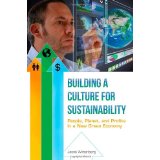On September 21, 2014 I’ll be in Manhattan to join what some are calling the People’s Climate March.

The People’s Climate March happens September 21, 2014.
I hope it will be a peaceful, friendly, and very large event.
To be honest, I am not the marching type. But I’m going to this because:
- the data show that climate change is real, and now is the time to take action to head it off – not later.
- for a variety of reasons, such action hasn’t occurred yet. By doing nothing, we increase the chance that bad things like killer storms, floods, droughts, and forest fires occur more frequently and become ever more severe. The bill for that parade of disasters will be paid by us, not just in terms of property damage and business disruption, but in terms of lives lost.
- I have a family and a conscience. I want to be able to look my daughter, and my nieces and nephews, in the eye, and say “I did everything I could to fix this.”
- I want to add my voice, however small, to what I believe is a very large movement whose will is being frustrated by a relatively few people with outsized influence.
- I believe that addressing climate change will be an economic boon to the U.S. and the world.
If you’ll be there too, I’d love to know. Drop me a line at alueders@verizon.net and let’s see if we can at least say “Hello.”








